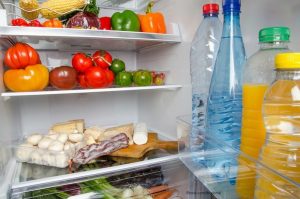Michigan State University Extension is offering tips for storing and using leftover food safely. If not handled properly, leftover food can become a vehicle for food poisoning.
 Always wash hands with soap and water before handling cooked food, especially food you are going to store to eat later. Always use clean utensils to handle this food. Store it in clean containers. Don’t put the food back into the same container it was in before cooking, unless it has been thoroughly washed with soap and water. And sanitize cutting boards and counters.
Always wash hands with soap and water before handling cooked food, especially food you are going to store to eat later. Always use clean utensils to handle this food. Store it in clean containers. Don’t put the food back into the same container it was in before cooking, unless it has been thoroughly washed with soap and water. And sanitize cutting boards and counters.
Leftovers should be stored in small, shallow containers, less than three inches in height. Always cover leftover containers. Don’t stack containers, but leave some air space around them so the cold air can circulate. Don’t use large, deep containers, since the food in the center will stay warm for a longer time, keeping it in the danger zone of 40 to 140° F.
When you are going to eat leftovers, heat them on the stove, in the oven, or in the microwave until the temperature reaches 165° F as measured by a food thermometer. Don’t use slow cookers or chafing dishes to reheat food.
Never taste leftovers to see if they are safe. And never keep leftovers for more than four days. When in doubt, throw it out! Always dispose of possibly unsafe food in closed containers so it can’t be eaten by other people or animals.
The University of Nebraska-Lincoln and Iowa State University Extension have developed an app and the “4-Day Throwaway” campaign to help people learn how to handle leftovers. Follow these tips to protect your family.




